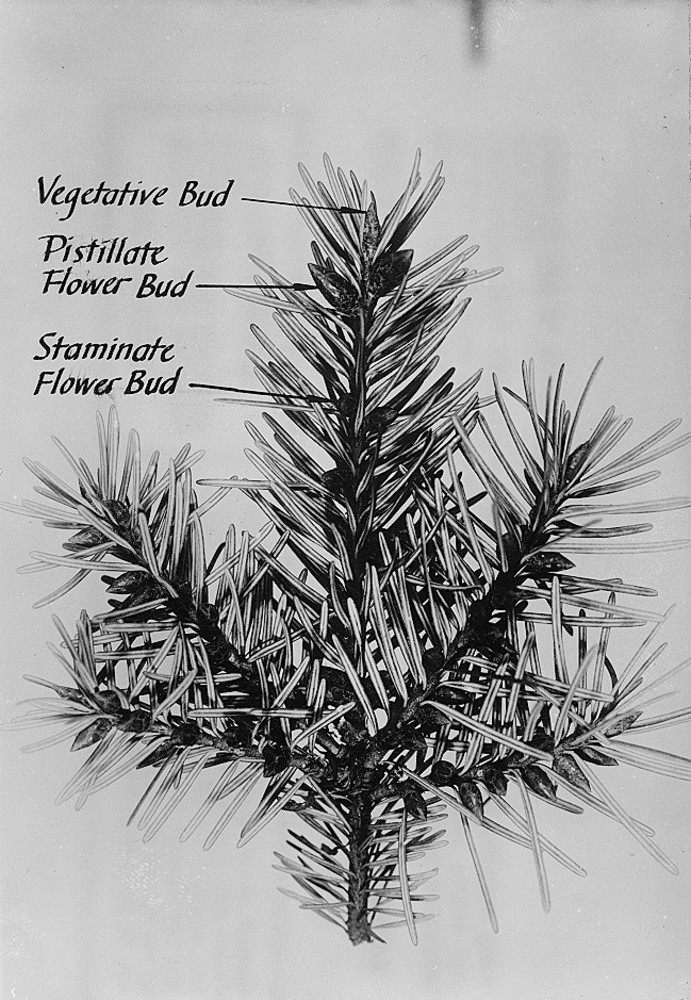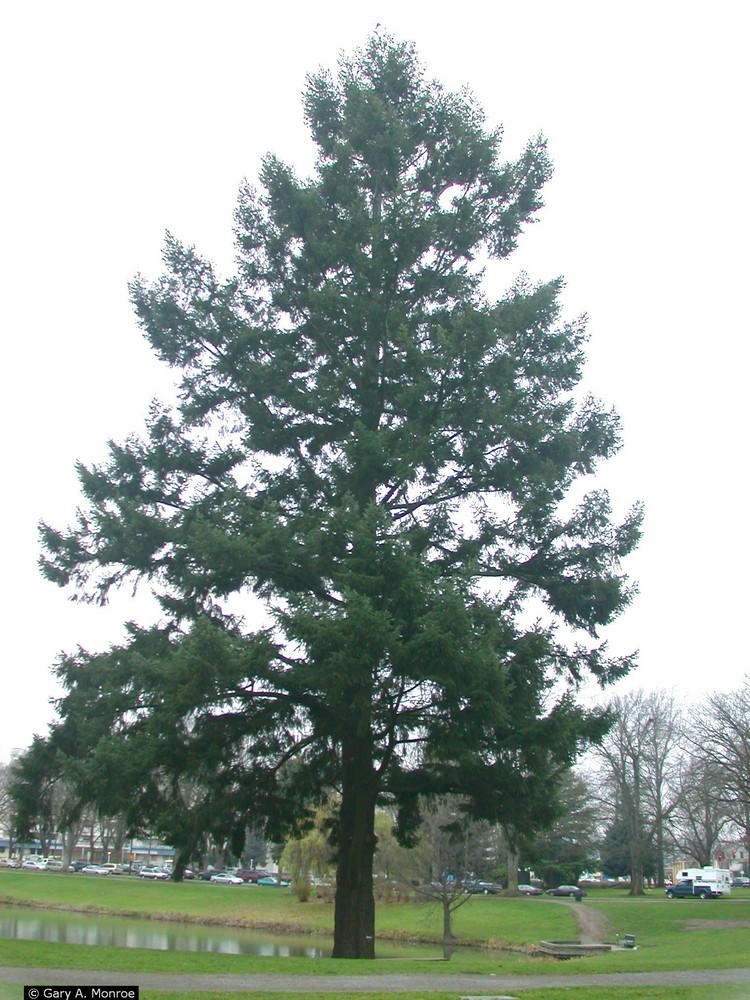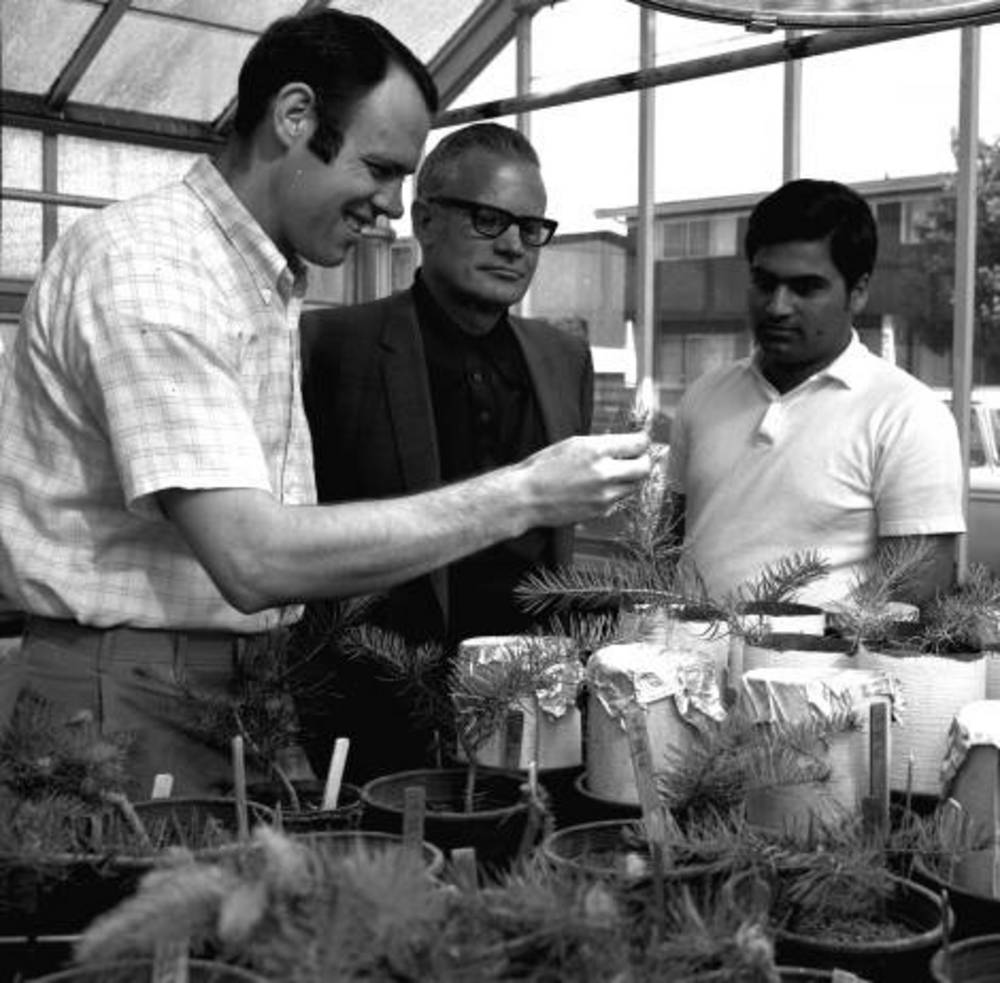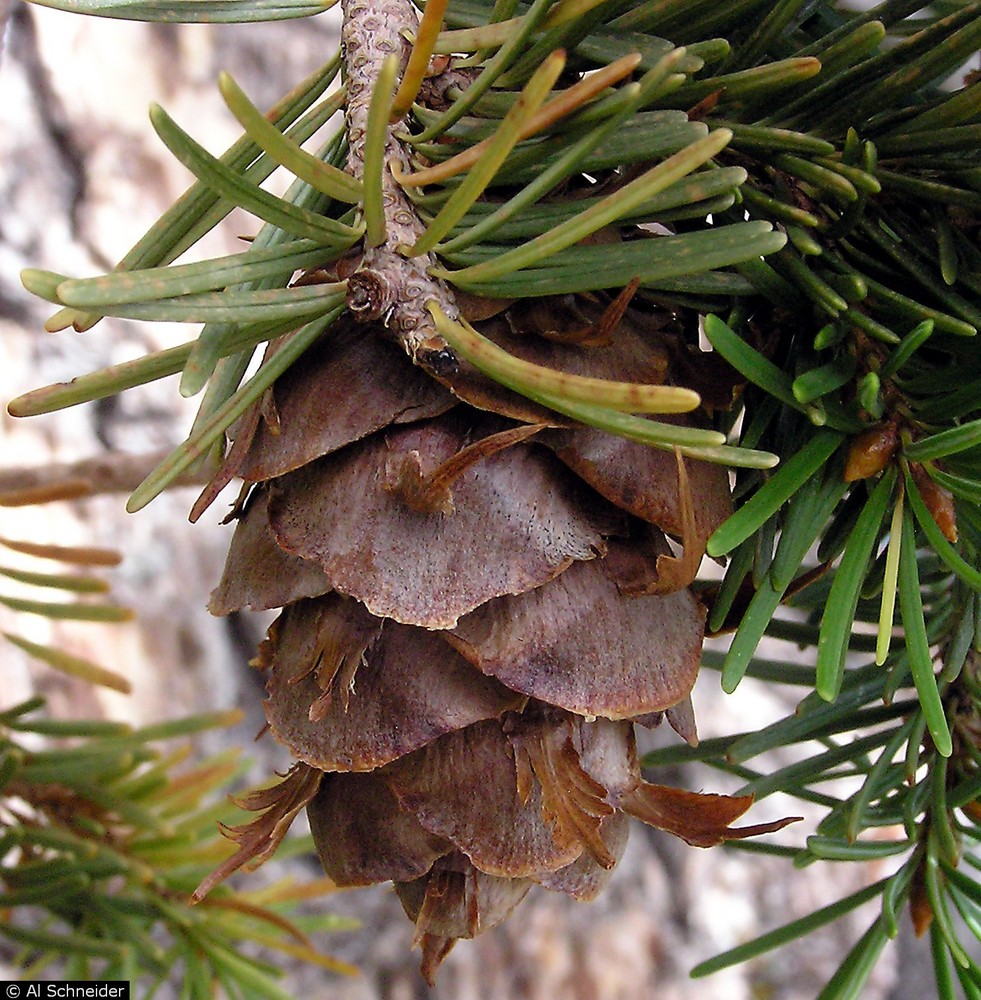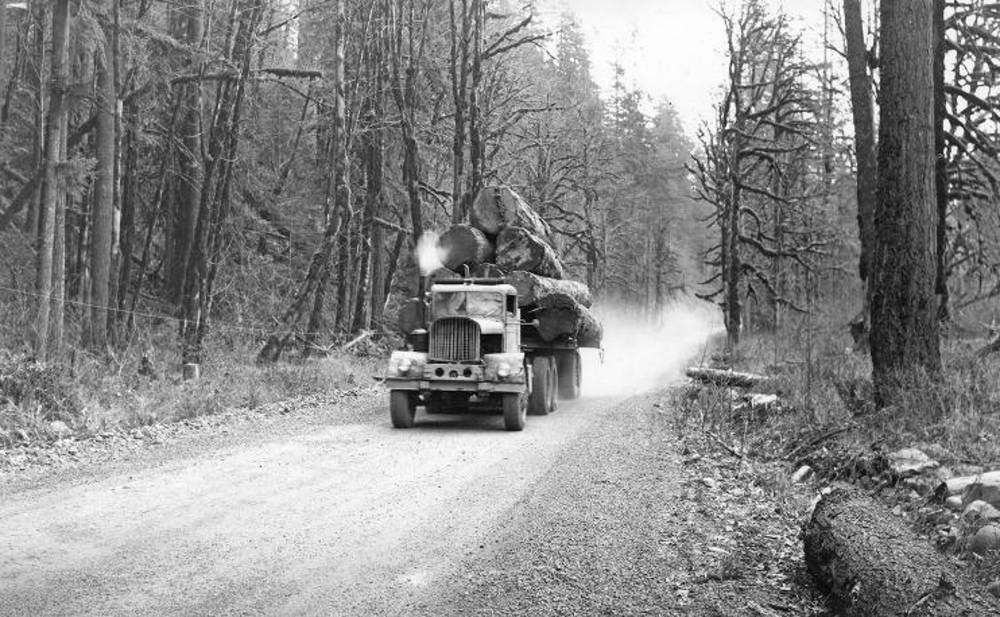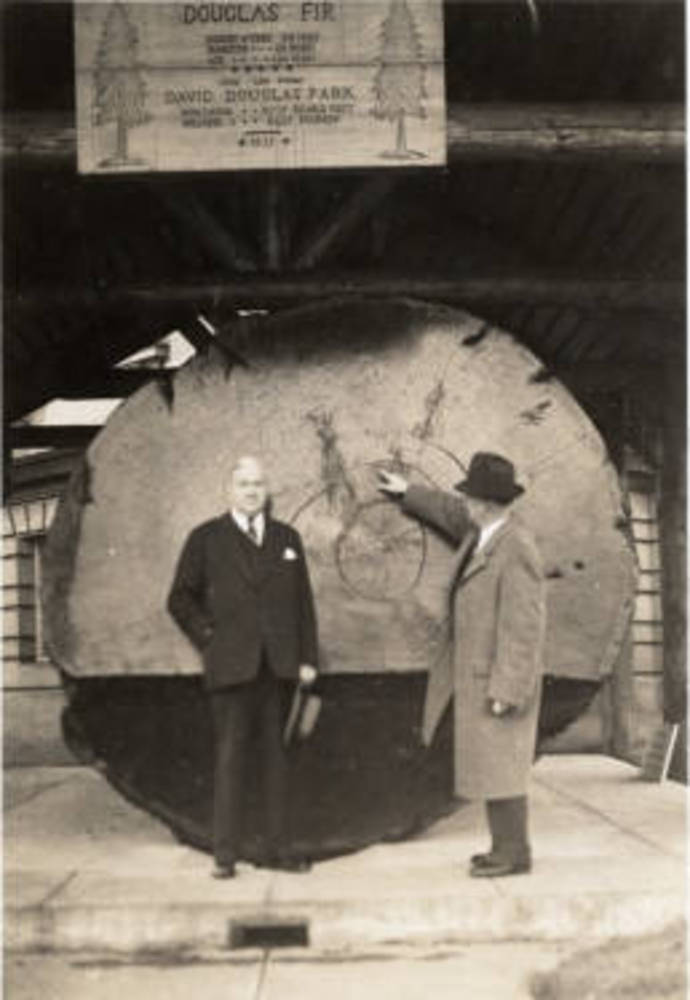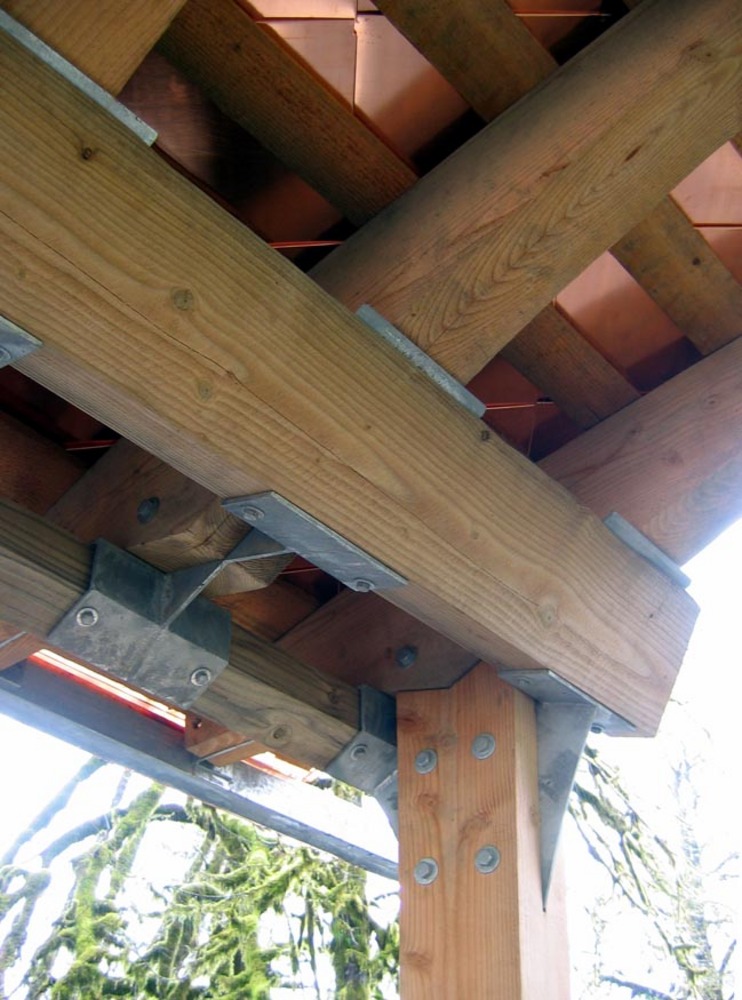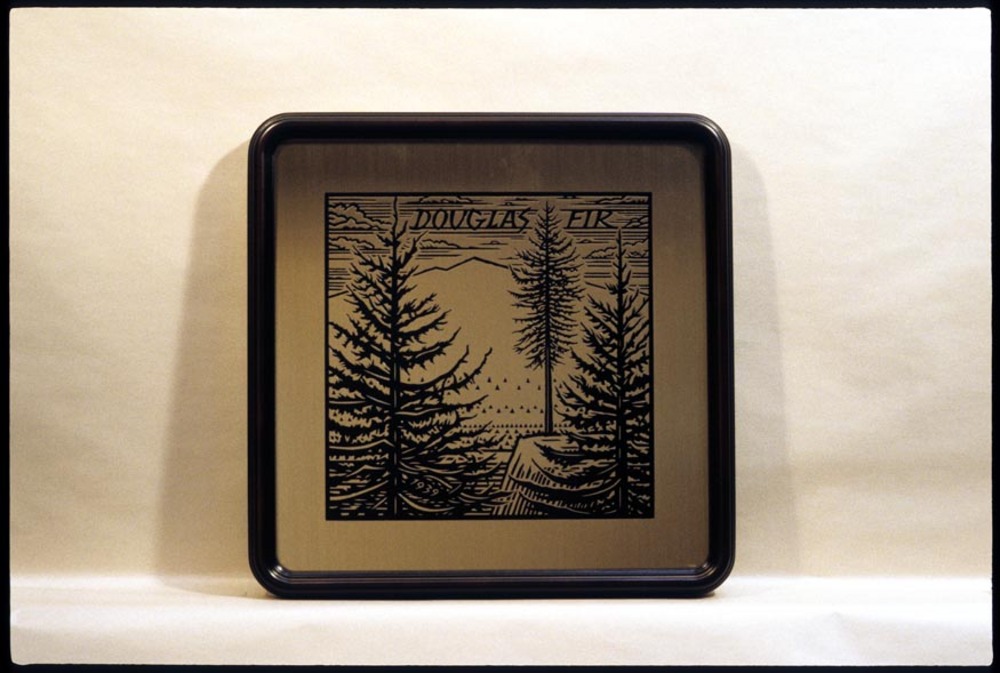Douglas-fir (Pseudotsuga menziesii), perhaps the most common tree in Oregon, is the most important conifer in the state because of its ecological and economic significance. The Oregon legislature recognized this when it designated Douglas-fir the official state tree in 1939. Eight of ten conifers west of the Cascades are Douglas-firs.
The widely accepted common name—Douglas-fir—commemorates David Douglas, the Scottish botanist who identified plants in Oregon in the nineteenth century. Other common names are Oregon pine (lumbermen), red-fir (used by loggers to distinguish it from the true fir of California, Abies magnifica), Douglasfir, Douglastree, and common douglas. The generic name Pseudotsuga means false (Pseudo) hemlock (tsuga, the Japanese name for hemlock).
For a time, the tree was known as Pseudotsuga taxifolia. The current accepted scientific name, Pseudotsuga menziesii, honors Archibald Menzies, a Scottish surgeon and naturalist who, on the George Vancouver expedition, was the first European to report the presence of this species on Vancouver Island in 1793.
The Douglas-fir is found from northern British Columbia, south to central California through the North Coast Ranges and central Sierra Nevada Mountains, and east through the Rocky Mountains south to northeastern Mexico. Trees from the west are the subspecies menziesii—coast Douglas-fir. Those in the Rocky Mountains south and in northeastern Oregon belong to variety (or subspecies) glauca, interior or Rocky Mountain Douglas-fir.
In Oregon, Douglas-fir grows in a variety of mixed conifer and hardwood forests, from sea level to 5,000 feet elevation. The species has some ability to germinate and grow in the shade of other species and eventually to replace them, but Douglas-firs prefer sunlight and mineral soil. Because of their immense size and thick bark, larger trees can survive wildfire and reseed themselves in many burned-over areas.
Douglas-firs can reach prodigious size. The Oregon Champion Coast Douglas-fir grows on Bureau of Land Management land in Coos County. It is 11.6 feet in diameter and 329 feet tall. The National Champion Rocky Mountain or interior Douglas-fir grows in Jefferson County, Oregon, and is puny in comparison, at 8 feet 4 inches in diameter and 139 feet tall. The largest known Douglas-fir is in British Columbia on the west Coast of Vancouver Island. It is 242 feet tall and 13.9 feet in diameter and the only known tree on earth—other than the California big tree (Sequoiadendron giganteum) and coast redwood (Sequoia semprivirens)—that has a diameter of 7 feet at 144 feet from the ground.
Native Americans used Douglas-fir wood for fuel, small utensils, and tools; they used its pitch for sealing joints and caulking canoes and water containers. They also used the tree and its parts for a variety of medicinal purposes.
As a versatile timber tree, Douglas-fir has few rivals. No tree in the world produces more wood products for human use. Its strong, relatively dense wood is used to produce large timber beams, boards, railroad ties, plywood veneer, and wood fiber for paper manufacture. Today, most Douglas-fir wood is from second-growth plantation trees or smaller trees in overstocked stands; huge beams are mostly a thing of the past.
-
![Drawing of Douglas Fir branch.]()
Douglas fir, drawing of.
Drawing of Douglas Fir branch. Courtesy USDA-NRCS PLANTS Database
-
![Douglas Fir at Lake Sacajawea Park, Cowlitz County, Washington.]()
Douglas fir 1.
Douglas Fir at Lake Sacajawea Park, Cowlitz County, Washington. Photo by Gary A. Monroe USDA-NRCS PLANTS Database
-
![Douglas fir seedlings at Oregon State University greenhouse, 1971. A.N. Roberts, Kim Black, and Harbans Sing Bhella (l to r).]()
Checking Douglas Fir seedlings.
Douglas fir seedlings at Oregon State University greenhouse, 1971. A.N. Roberts, Kim Black, and Harbans Sing Bhella (l to r). Oreg. State Univ. Archives, Bill Reasons Photo Coll., P151:1403
-
![Douglas Fir cone.]()
Douglas fir, cone of.
Douglas Fir cone. Photo by Al Schneider USDA-NRCS PLANTS Database, Copyright Al Schneider, www.swcoloradowildflowers.com
-
![Snow Peak Logging Company truck loaded with Douglas fir logs, 1944.]()
Log truck, with douglas fir logs, 1944.
Snow Peak Logging Company truck loaded with Douglas fir logs, 1944. Oreg. State Univ. Archives, Gerald W. Williams Coll., Santiam Valley album, WilliamsG:Santiam USFS429710
-
![Douglas fir log at John Jacob Astor Branch Station, Agricultural Experiment Station, Clatsop County, 1940.]()
Douglas fir log, 1940.
Douglas fir log at John Jacob Astor Branch Station, Agricultural Experiment Station, Clatsop County, 1940. Oreg. State Univ. Archives, Agr. Exp. Sta. Photo Coll., P29
-
![Detail of kiosk at Fall Creek Hatchery in Alsea, made with salvaged Douglas fir logs.]()
Art kiosk, made with Douglas fir.
Detail of kiosk at Fall Creek Hatchery in Alsea, made with salvaged Douglas fir logs. Univ. of Oreg. Lib., Oreg. Public Percent for Art Digital Coll.
-
![Bronze medallion of Oregon's state tree, the Douglas fir, created by Dennis Cunningham.]()
Douglas fir bronze medallion.
Bronze medallion of Oregon's state tree, the Douglas fir, created by Dennis Cunningham. Univ. of Oreg. Lib., Oreg. Public Percent for Art Digital Coll.
Related Entries
Related Historical Records
Map This on the Oregon History WayFinder
The Oregon History Wayfinder is an interactive map that identifies significant places, people, and events in Oregon history.
Further Reading
Arno, S.F. and R.P. Hammerly. Northwest Trees: identifying and understanding our native trees. Revised Ed. Seattle: Mountaineers 2007.
Farjon, A. A Natural History of Conifers. Portland: Timber Press. 2008.
Jensen, E.C., and C.R. Ross, Trees to Know in Oregon. Revised Ed. Corvallis: Oregon State University Extension Service 2005.



